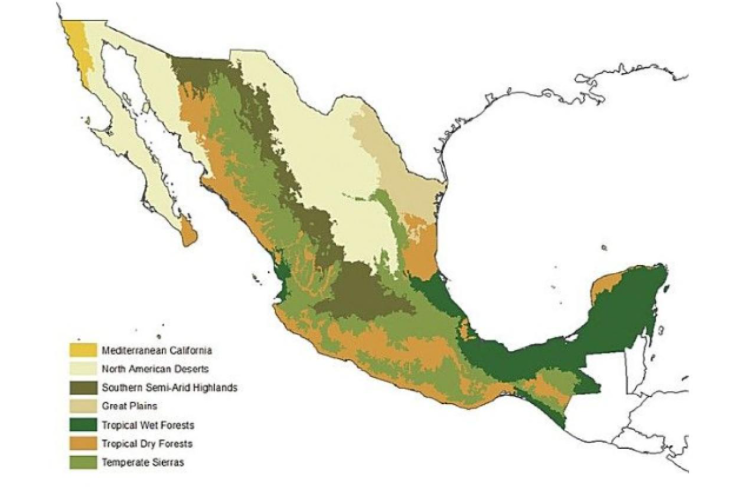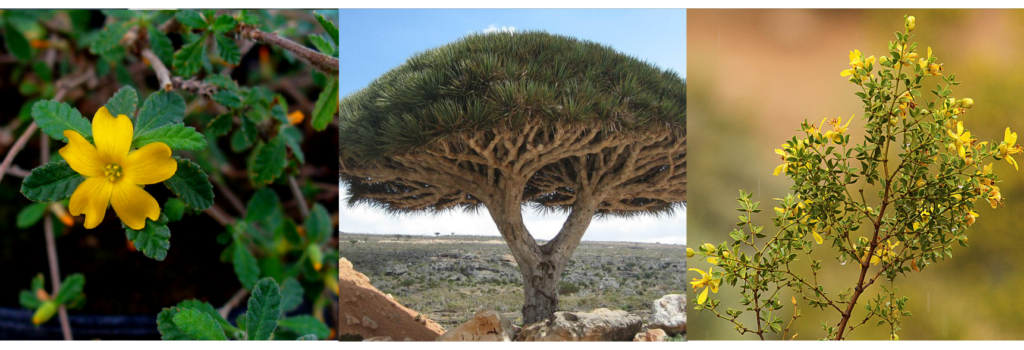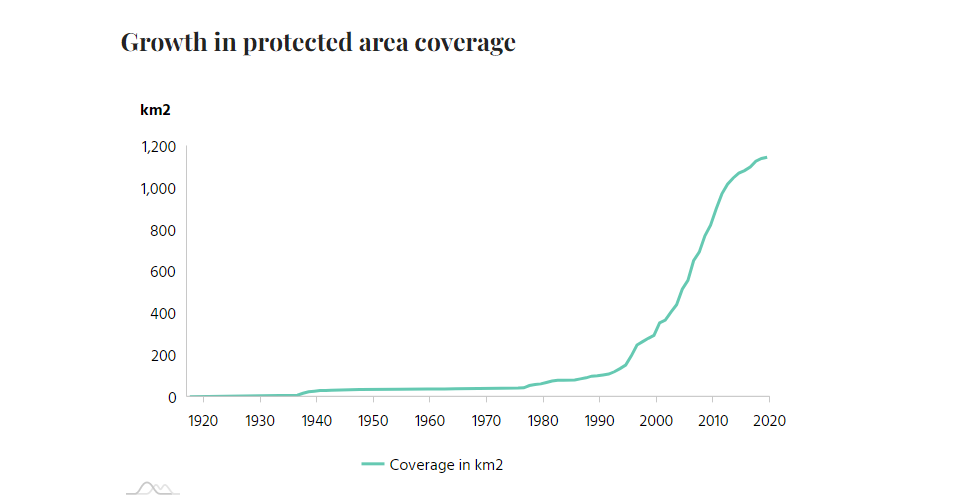Biodiversity refers to the variety of life that may be found in a given place. It includes animals, plants, fungi, and even microbes such as bacteria.
Read more: What Is Biodiversity?
Mexico is one of the richest areas of biodiversity in the world. In fact, it is one of 17 countries considered “mega-diverse”. With more than 200,000 species, Mexico holds about 12% of the world’s biodiversity.
Table of Contents
Biodiversity of Wildlife in Mexico
Biodiversity of Plants in Mexico
Threats to Biodiversity in Mexico
Biodiversity Conservation in Mexico
Biomes in Mexico
Biomes are large geographical areas distinguished by their vegetation, soil, climate, and wildlife. Biodiversity exists in all types of biomes, though some biomes are more biodiverse than others.
Read more: Biomes and Biodiversity
Different Mexican biomes play an important role in sustaining the country’s rich biodiversity. Mexico’s natural habitats consist of several biomes, including:
- Coniferous Forests
- Tropical Rainforests
- Temperate Forests
- Deserts
- Grasslands
- Alpine Tundra
- Rivers and Lakes
- Gulf and Coastal Lagoons
The image below shows the different terrestrial ecoregions in Mexico.

Biodiversity of Wildlife in Mexico
Compared to other countries around the world, Mexico ranks high in the number of different wildlife species populations it holds. Many of these species are endemic to Mexico, meaning not only are they native, but they do not exist elsewhere. This is particularly important to note, as when endemic species are threatened in Mexico, the existence of that species as a whole is threatened, as they do not exist elsewhere.
Reptiles:
Mexico ranks second in the world in terms of reptile biodiversity, with more than 800 species of reptile. Some of them are considered endemic, such as the Mexican Horned Pit Viper, Bolson Tortoise, and Guerrero Leaf-Toed Gecko.
Mammals:
Mexico ranks third in the world in terms of mammal biodiversity, with more than 500 species of mammals. Around 30% of them are endemic, including Vaquitas, El Carizzo Deer Mice, and Mexican Wolves.
Birds:
Mexico ranks 11th in the world in terms of bird biodiversity, with approximately 1000 species of birds. 114 of them are considered endemic, such as Mexican Parrotlets, Tamaulipas Pygmy Owls, and Grey-Breast Woodpeckers.
The image below shows some of the endemic wildlife species that can be found in Mexico: the Mexican Parrotlet, Mexican Graywolf, and Mexican Horned Pitviper

Biodiversity of Plants in Mexico
The biodiversity of flora in Mexico is very diverse. Ranking 4th in the world for biodiversity, Mexico is home to approximately 26,000 species of plants and trees. Due to its desert regions, Mexico has the highest number of cactus species in the world, including some that can grow up to more than 60 feet.
Value of Biodiverse Flora in Mexico
Not only do biodiverse flora help contribute to a stable ecosystem, but these plants provide many ecosystem services to humans as well. The majority of Mexico’s flora species are extremely valuable. Almost 600 distinct species are utilized for reforestation, 4,000 different species have medicinal qualities, tens of thousands of species offer biotechnological potential, and hundreds of species are used in handicrafts, decorations, and hunting. Here are some examples of Mexican flora biodiversity used in traditional medicine:
Dragon’s Blood
This endemic plant found in the Mexican semi-desert is used in traditional Mexican medicine to treat many ailments and to prevent hair loss. The extract of this plant has been utilized as an antibacterial agent. The plant is primarily used in treating vaginitis, urethritis, gonorrhea, nephritis, gastroenteritis, conjunctivitis, renal congestion, and as a local antiseptic.
Turnera Diffusa (Damiana)
This plant found in the semiarid regions of Mexico has been utilized in traditional Mexican medicine to cure a variety of illnesses through infusions, teas, and antiseptic treatments. Damiana extracts include substances that have anxiolytic effects that reduce depression and its physiological effects. It is also considered to prevent diabetes due to its hypoglycemic activity. It also controls inflammation in wounds and prevents infections caused by parasites.
Creosote Bush (Gobernadora)
This flowering bush is abundant in the northern Mexican desert and is an important source of natural products with biological components such as 19 flavonoid aglycones, several flavonoid glycosides, halogenic alkaloids, lignans, and a huge amount of essential oils. The use of Creosote Bush extracts together with some preparations is believed to treat different kinds of diseases, including skin sores, fungal and microbial infections, diabetes, kidney and gallbladder stones, arthritis, venereal diseases, cold virus infections, sinusitis, rheumatism, and even cancer.
The image below shows the three Mexican flora species specified above that are used as traditional medicine: the Damiana, Dragon’s Blood tree, and Gobernadora.

Threats to Biodiversity in Mexico
Biodiversity is essential to the functioning of a healthy planet. However, biodiversity in Mexico has come under threat mainly due to human action. In 2011, the Ministry of Environment and Natural Resources performed a study that found that 28.7% of land areas in Mexico had lost their natural ecosystems.
Environmental problems in Mexico that threaten biodiversity include, but are not limited to:
- Chemical pollution from factories
- Pollution from industrial waste-dumping
- Deforestation
- Introduction of invasive species
- Climate change
The loss of forests is particularly threatening to biodiversity in Mexico, as many species (both plants and animals) depend on the forest habitat to survive. Deforestation occurs for a number of reasons including land clearing for agricultural uses, land clearing for urbanization, and overuse of trees for heating or cooking. For example, it’s estimated that families in Oaxaca burn about 26 lbs of wood every day. From 2002 to 2020, Mexico lost 662kha of humid primary forest, which is about 16% of its total tree cover loss (4.29Mha) in that time overall.
Not only does deforestation have devastating effects on biodiversity, but it also contributes to global warming, as trees that store carbon are cut down. The loss of biodiversity also impacts the human economy in Mexico; according to the National Geography and Statistics Institute in 2019, costs related to environmental degradation and resource depletion make up 4.5% of the GDP.
Biodiversity Conservation in Mexico
In total, there are 1146 protected areas set aside for the conservation of biodiversity in Mexico.
Of these areas, 132 of them have undergone management effectiveness evaluations. The goal of a management effectiveness evaluation is to study a protected area to see if it is being properly managed to promote conservation. The evaluation might ask things like, “why is the protected area important?” and then assess the legal status of the land, in addition to whether adequate and effective management resources are in place for protection.
Terrestrial Protected Area Coverage:
A total of 284,801 km2 of land area is protected in Mexico. This represents 14.49% of Mexico’s total land area of 1,965,285 km2.
Marine Protected Area Coverage:
A total of 707,956km2 of Mexico’s marine and coastal area is protected. This is 21.55% of Mexico’s total marine and coastal area of 3,284,660 km2.
The image below shows the growth in protected areas in Mexico per km2 throughout the decades.
